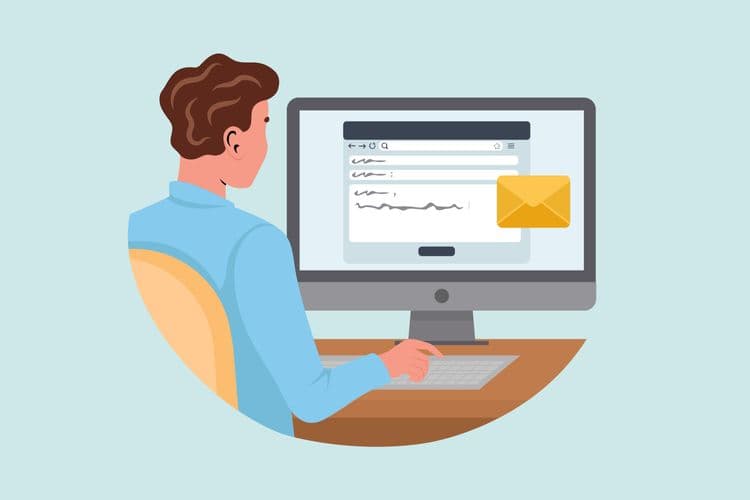Spanish Future Tense Conjugation Rules: Speak About the Future Fluently

Contents
Key takeaways:
- We use the Spanish future tense to discuss what will happen or what might happen, including making plans, making promises, or offering suggestions.
- To form the Spanish future tense for regular verbs, simply add the appropriate ending to the infinitive (basic) form of the verb.
- The endings are: -é, -ás, -á, -emos, -éis, and -án, depending on the subject pronoun in the sentence.
- For irregular verbs, we change their stem before we add the future endings. But the future tense endings are all still the same.
Mastered “mañana” and want to speak more about the future in Spanish? We think you’re ready to learn about the Spanish future tense conjugation. Once you’ve cornered this language skill, you’ll be able to plan trips, make promises, and imagine all kinds of “what ifs.”
We know that Spanish tenses aren’t always simple, but they're definitely not impossible. To form the future tense, you add a specific ending to the infinitive form of the verb (i.e., the most basic form of the verb). Thankfully, the verb groups of the future tense use the same endings, so it's slightly easier to pick up.
When we talk about the future tense, it doesn’t just mean we’re talking about something that will happen. It also helps you express certainty, probability, and sometimes, make suggestions. Here's what makes the future tense special:
- It’s not formed with an auxiliary verb like in English ("will eat"). Instead, you attach the ending directly to the verb's infinitive (basic) form.
- It works the same for -ar, -er, and -ir verbs.
- It’s helpful for formal speech because it sounds more polished than using "going to".
Examples in conversation:
- Mañana viajaré a Madrid. — Tomorrow I will travel to Madrid.
- ¿Quién llamará a la puerta? — Who could be knocking at the door?
- Estudiarás mucho si quieres aprobar. — You will study a lot if you want to pass.
How to form the future tense in Spanish
We’re not saying future Spanish conjugation is easy, but it is one of the easier tenses for beginner learners to master. Unlike those tricky tenses where you have to remove endings or entirely change the root of the verb, the future tense is consistent.
There's no need to chop anything off the infinitive (the base form of the verb, like hablar, comer, or vivir). Instead, you keep the whole verb and add the same set of endings. Every. Single. Time.
So, fewer rules to memorize, consistency and predictability, and a major confidence boost for Spanish learners. What's not to love? Now, you're ready to learn a little more about forming the future tense.
Regular Spanish future tense conjugation rules
When you’re speaking in the future tense in Spanish, all regular verbs, including -ar, -er, and -ir, will use the same endings. You'll find this different from most other tenses, where each verb group has its own distinct pattern, so hopefully, it's easier to learn.
Follow this formula for help: You start with the full infinitive verb (e.g., hablar, comer, vivir), then add the future tense ending that matches the subject pronoun of the sentence. These are the future Spanish endings you’ll use every time:
| Subject pronoun | Ending |
| yo | -é |
| tú | -ás |
| él/ella/usted | -á |
| nosotros/as | -emos |
| vosotros/as | -éis |
| ellos/ellas/ustedes | -án |
When conjugation is this consistent, you’ll find it much easier to remember how to use the future tense when you’re speaking Spanish. And if you practice regularly with Promova’s Spanish conjugation chart? It’s in the bag.
1
How to use future tense endings Spanish for verb groups
You’ve got the knowledge; now let’s put it into action. These future Spanish endings apply to every verb group, including those ending in -ar, -er, and -ir. So, once you get the hang of one pattern, you can apply it to hundreds of verbs.
Check out this chart to see how they apply based on pronoun:
| Pronoun | Hablar (to speak) | Comer (to eat) | Vivir (to live) | Extra example |
| yo | hablaré | comeré | viviré | escribiré (I will write) |
| tú | hablarás | comerás | vivirás | viajarás (you will travel) |
| él/ella | hablará | comerá | vivirá | leerá (he/she will read) |
| nosotros | hablaremos | comeremos | viviremos | jugaremos (we will play) |
| vosotros | hablaréis | comeréis | viviréis | cantaréis (you all will sing) |
| ellos | hablarán | comerán | vivirán | aprenderán (they will learn) |
As you can see, having one future tense ending that you can use for each pronoun makes it muy fácil. Now, you’re ready to put together your own Spanish future tense conjugation.
Step-by-step: future conjugation Spanish process

Everything comes easier if you lay out the steps, including learning Spanish. Here are the simple steps for conjugating the verb escribir (to write) in the first person singular (yo):
- Keep the infinitive: escribir
- Choose the pronoun: yo
- Add the correct ending for “yo” (-é): escribiré
- Try it in a sentence: Yo escribiré una carta a mi abuela. — I will write a letter to my grandmother.
When you use Promova's AI practice, you can type the complete conjugated form and get instant feedback on how you did. What a speedy way to learn Spanish.
How do irregular verbs in the future tense work in Spanish?
Not to take you on another tangent, but all good language learners have to tackle irregular verbs eventually. And while the future tense is pretty predictable in Spanish, some common verbs don't follow the usual pattern (including the notorious poder in future tense). Enter our irregular verbs.
An irregular verb doesn't form its past tense and past participle by adding the typical ás or emos to its stem (or base). Instead, they have unique past tense and past participle forms that you add to, and they can be pretty unpredictable.
When we talk about the future tense, irregular verbs change their stem before adding the future endings. But even though they change, the future tense endings will always stay exactly the same. So, you only have to memorize the new stems to use these verbs.
Don’t worry, it won’t be long before these all feel second nature to you. In the meantime, here are some examples to help:
| Infinitive | Stem | Example |
| decir (to say) | dir- | diré (I will say) |
| hacer (to do/make) | har- | harás (you will do) |
| poder (to be able) | podr- | podremos (we will be able) |
| poner (to put) | pondr- | pondréis (you all will put) |
| querer (to want) | querr- | querrán (they will want) |
| saber (to know) | sabr- | sabré (I will know) |
| salir (to go out/leave) | saldr- | saldrás (you will leave) |
| tener (to have) | tendr- | tendrá (he will have) |
| venir (to come) | vendr- | vendremos (we will come) |
- Mañana sabrás la verdad. — Tomorrow you will know the truth.
- Tendremos que estudiar más para el examen. — We will have to study more for the exam.
- Vendrán a visitarnos el próximo verano. — They will come to visit us next summer.
Using the future tense in real conversations
The Spanish future tense appears in daily life more than you might expect. Any time you make a plan, guess what’s going on, or even promise something to someone, you can apply what you’ve learned here today. With over 500 million native Spanish speakers globally, and an additional 20 million or so learning to speak it, you’ll have lots of opportunities.
As a future conjugation Spanish learner, you'll soon find it a breeze to use these in real conversations.
- Talking about your future plans:
- Iré al cine esta noche. — I will go to the movies tonight.
- Ella trabajará en París el año que viene. — She will work in Paris next year.
- Making promises to someone:
- Te llamaré después de la reunión. — I will call you after the meeting.
- No lo olvidaré jamás. — I will never forget it.
- Expressing probability or taking a guess:
- Serán las ocho. — It must be eight o’clock.
- Estará en casa. — He's probably at home.
- Making polite commands or suggestions:
- Harás los deberes antes de salir. — You will do your homework before going out.
- Comerás más verduras. — You will eat more vegetables.
Promova’s interactive Spanish exercises and quizzes can help you use the future tense naturally and fluently — and have fun while you’re doing it.
How to avoid common future tense mistakes in Spanish
Mistakes are an inevitable part of learning anything, the Spanish language included. So, it's perfectly normal to trip up on your Spanish future tense conjugation from time to time. These are some common Spanish language mistakes you might encounter, and tips on how to fix them.
- Using "ir a + infinitive" instead of the future tense all the time
- Why we do it: English speakers default to "going to" because it feels easier.
- How to fix it: Remember that Spanish speakers often mix both forms. Use the simple future when the plan feels more formal, distant, or certain.
- Forgetting to keep the infinitive intact for regular verbs
- Why we do it: We're used to chopping off the ending for the present tense.
- How to fix it: Always add future endings directly to the infinitive, rather than cutting it.
- Mixing up irregular stems
- Why we do it: Irregular verbs in other tenses have different changes.
- How to fix it: Group them into patterns, like "dr" stems (tendré, saldré, pondré) and “rr” stems (querré) to help remember.
- Overusing subject pronouns
- Why it happens: English always needs a pronoun.
- How to fix it: In Spanish, the verb ending already tells you the subject. You can get rid of pronouns unless you need emphasis.
- Confusing your future tense with conditional
- Why we do it: They both use similar endings.
- How to fix it: Future tense endings are shorter (-é, -ás, -á), but conditional uses -ía, -ías, -ía.
Promova helps you master Spanish tenses
Once you master future Spanish conjugation, you’ve completed a major piece of the language puzzle. And Promova is here to help you do the rest. You can tailor the Promova language learning app to suit you exactly, with loads of smart tools and interactive learning solutions.
- Practice conjugations interactively with instant corrections, thanks to our AI language assistant.
- Speak with real-life dialogues and scenarios, so you know the correct context.
- Learn in settings that suit you best, with bite-sized lessons you can take at home or on your daily commute.
We make it easy to hear, speak, and write Spanish every day, in a way that suits you. Future tenses will become second nature when you learn Spanish with Promova.
Final thoughts
Learn how to wield the Spanish future tense, and you can do everything from make a promise to inform everyone of your grand plans. Since regular verbs follow simple rules and irregular verbs have predictable patterns, with a little practice, you'll get it.
Don't forget, Promova is with you every step of the way. Our guided, interactive learning means you can go at your own pace, with a stack of resources available as soon as you sign up. Build your confidence more each day, and you'll master the Spanish future tense in no time.
FAQ
How many future tenses does Spanish have?
The Spanish language has two main ways to talk about the future: the simple future tense (e.g., hablaré) and the ir a + infinitive construction (e.g., voy a hablar). There’s also the future perfect tense for actions that will be completed before a certain point (habré terminado).
What is the rule for the future tense "going to" in Spanish?
In Spanish, the “going to” future tense works similarly to English. You use the present tense of ir (to go) + a (the preposition) + the main verb in its basic, infinitive form. This is a common way to talk about actions that will happen soon.
What is the rule for conjugation of the future tense in Spanish?
To conjugate the future tense in Spanish, you take the full infinitive (comer) and add the correct ending (-é, -ás, -á, -emos, -éis, -án) depending on the subject. Irregular verbs keep the same endings but change their stem (e.g., tener becomes tendré).



Comments